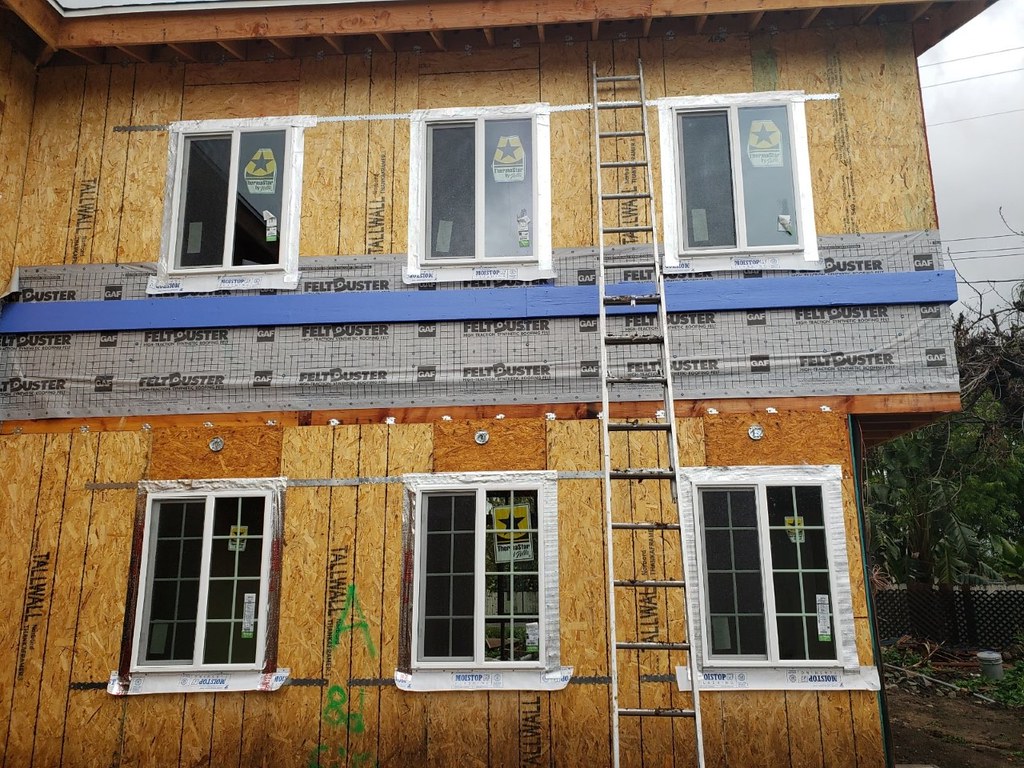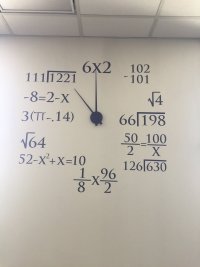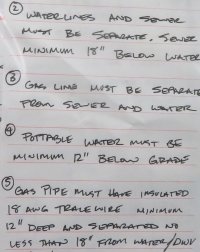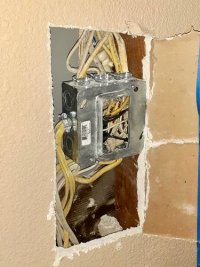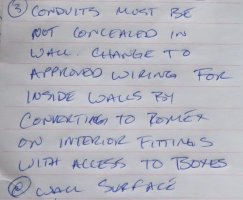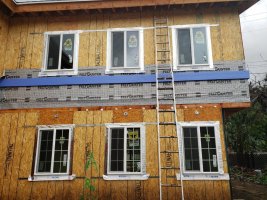 "What are we looking for ICE?
"What are we looking for ICE?
Unsecured ladder, questionable flashing material (looks like foil tape?), the what appears to be excessive cantilever at the right wall, windows that are not vertically aligned (bad design, but not a violation if headers account for load transfer), the shear-walls with straps for force transfer around openings (missing at corner window's outside edge)?
Inquisitive minds wanna know what you saw."
Ty J.,
This is not a job that I am involved with. An inspector found this during a virtual inspection. The coil strap may or may not be on the plans but the strap didn't extend far enough at the ends. The strap is either under the window nail flange or over the flange either of which is not a good idea. Generally when strap is called out on plans, there is strap under the window opening as well as the top.... but that' s generally and I've seen it both ways.
The window flashing at the side and top is a self-adhering flashing that is not made for this application. Additionally, the side flashing should be under the window flange. Oh and the stuff is too narrow as well.
The belly band is, how should I say this in a not unkind manner, ridiculous. And the color! What's this place going to look like?
The windows seem to lineup okay. Now if any are bedroom egress they are, like the flashing, too narrow.
I notice a lack of eave vents.
The fascia is nailed with sinkers.
And the ladder? They're just storing the ladder.
I can't zoom in on the picture ....oh wait a minute, I bet I can with the iPad. Ya but the iPad is upstairs.......yes it zooms on the iPad but gets blurry fast....but I found eave vents.
What do you think about the lighting outlets?


